|
Updated: May 24, 2024

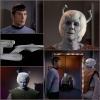







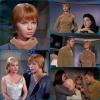



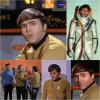


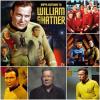

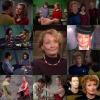







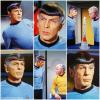









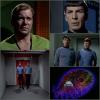




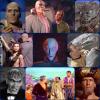


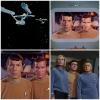



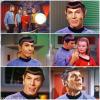

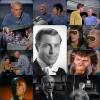

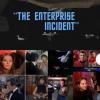
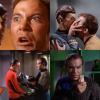
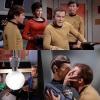


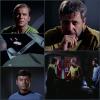


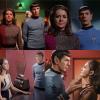










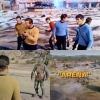
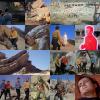
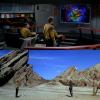
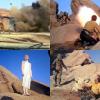

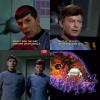
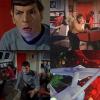
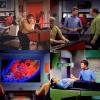


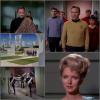
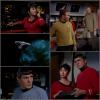
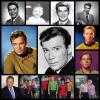
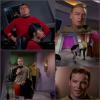

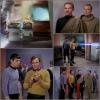

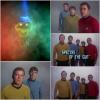
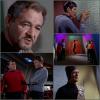
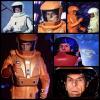
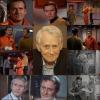

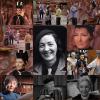


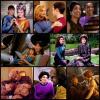



Star Trek: The Original Series ( referred to as Star Trek prior to any spin-offs ) is the first Star Trek series. The first
episode of the show aired on 6 September 1966 on CTV in Canada, followed by a 8 September 1966 airing on NBC in America. The show
was created by Gene Roddenberry as a "Wagon Train to the Stars". Star Trek was set in the 23rd century and featured the voyages of the starship USS Enterprise under Captain James T. Kirk.
Star Trek was later informally dubbed The Original Series, or TOS, after several spin-offs aired. The show lasted three seasons
until canceled in 1969. When the show first aired on TV, and until lowering budget issues in its third season resulted in a
noticable drop in quality episodes and placed in a 10 pm Friday night death slot by the network, Star Trek regularly performed respectably in its time slot. After it was canceled and went into syndication, however, its popularity exploded. It featured themes such as a Utopian society and racial equality, and the first African-American officer in a recurring role.
Ten years later, Star Trek: The Motion Picture reunited the cast on the big screen aboard a refurbished USS Enterprise. They
appeared in five subsequent films, ending with Star Trek VI: The Undiscovered Country in 1991, during production of the spin-off series Star Trek: The Next Generation and shortly before Gene Roddenberry's death. Several original series characters also appeared in the seventh movie, Star Trek Generations, and in other Star Trek productions.
Filming the second pilot began in July 1965, and took nine days to complete. The entire cast of "The Cage" was replaced except
Spock. Jeffrey Hunter chose not to reprise his role as Captain Pike, mostly by the advice of his wife, who felt that "science
fiction ruins her husband's career". Roddenberry wanted both Lloyd Bridges and Jack Lord for the role of the new captain, however
both declined. Finally William Shatner, who had previous science fiction experience acting in episodes of The Twilight Zone and
The Outer Limits, was chosen. The new captain was named James R. Kirk ( later renamed James T. Kirk ).
For the role of the chief medical officer, Roddenberry chose veteran actor Paul Fix. Canadian actor James Doohan got the role of chief engineer Scott, and young Japanese-American George Takei was featured as ship's physicist Sulu. The latter two reprised
their roles in the upcoming series, though Sulu was a helmsman in the series. Other actors considered for being regulars were
Lloyd Haynes as communications officer Alden and Andrea Dromm as Yeoman Smith, but neither of them were re-hired after the pilot.
Many of the production staff were replaced. Robert Dawn served as head make-up artist, however Fred Phillips returned to the
position in the series itself. Academy Award winner cinematographer Ernest Haller came out of semi-retirement to work as the
director of photography. Associate producer Byron Haskin was replaced by Robert Justman, who now shared double duties as producer
and assistant director.
The Enterprise model was updated for the second pilot, and many new outer space effects shots were made, most of which were reused
in the series itself. The sets were also updated a bit, most notably the main bridge and the transporter room. Most of the
uniforms, props, and sets were reused from "The Cage", however some new props ( including the never-seen-again phaser rifle ) and
a brand new matte painting ( the planet Delta Vega ) were made specially for this episode.
"Where No Man Has Gone Before" was accepted by NBC and the first season of a regular series was ordered for broadcasting in the 1966-67 television season. History was made.
The series begins:
Preparation for the first regular season began in early 1966. All the Enterprise interior sets were updated, as well as the introduction of brand new uniforms. The look of the show became more colorful and more vivid. The Enterprise model was also
updated once more. Also, the entire production was moved from Desilu's Culver City studios to the main Gower Street studio's
Stage 9 and 10 ( Paramount Stage 31 and 32 from 1967 onward ) in Hollywood.
Kirk ( Shatner ) and Spock ( Nimoy ) were kept as the series stars, with Grace Lee Whitney joining the two as Yeoman Janice Rand ( replacing Andrea Dromm as Yeoman Smith ). Whitney had worked with Roddenberry a year before on an unsold pilot titled Police
Story. Publicity photos promoting the new series were made at this time, with the three of them, mostly using props left from the
two pilots ( most notably the aforementioned phaser rifle ). Shatner and Nimoy wore their new uniforms on these photographs, while Whitney had to wear an old, pilot version.
Scott ( Doohan ) and Sulu ( Takei ) were also kept, the latter becoming the ship's helmsman instead of physicist. Two additions
made the Enterprise main crew complete: DeForest Kelley was hired to play the new chief medical officer, Leonard McCoy, as Roddenberry had known him from previous projects, including the aforementioned Police Story. Actress Nichelle Nichols got the role
of communications officer Uhura, who became a symbol of the racial and gender diversity of the show. Nichols was a last minute addition, weeks before filming began on the first regular episode.
|
 HOME
HOME
 About
About
 EMail Me
EMail Me TOP |
TOP |  PREVIOUS ITEM | NEXT ITEM
PREVIOUS ITEM | NEXT ITEM  ( 7 of 61 )
( 7 of 61 )




































































































